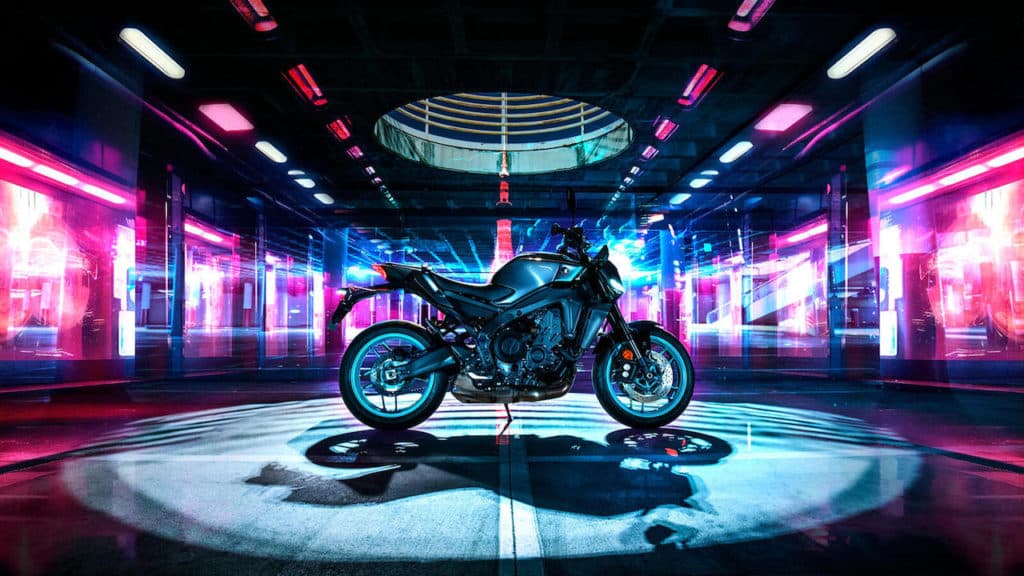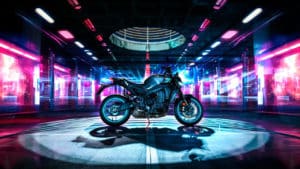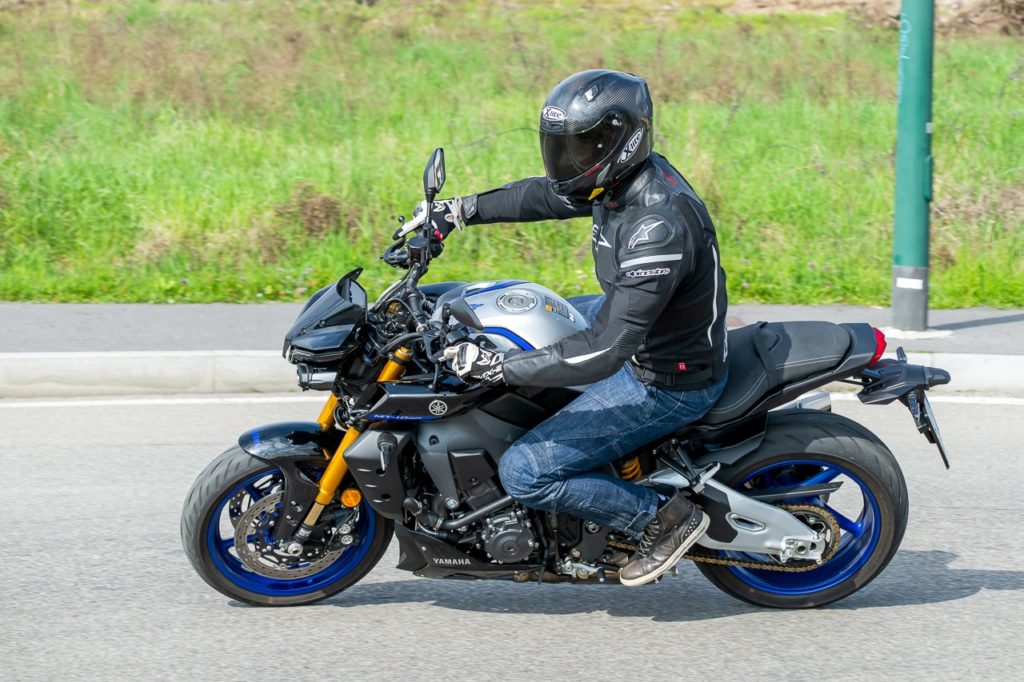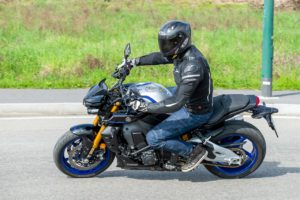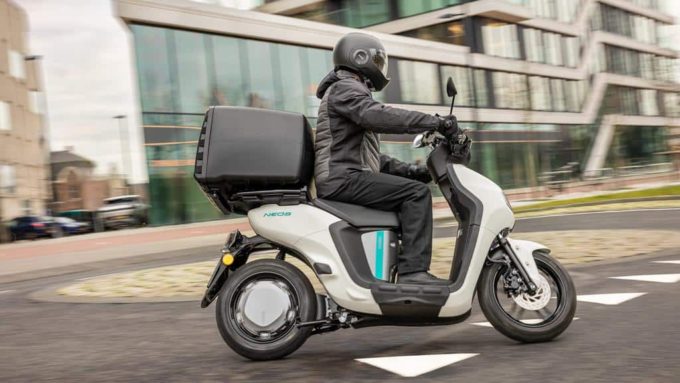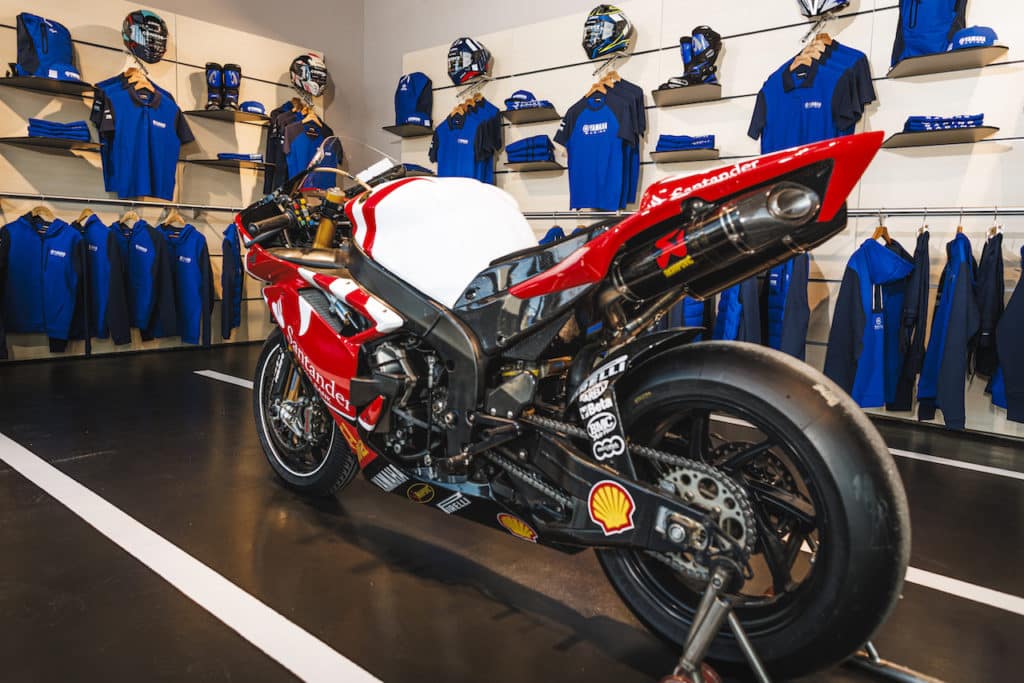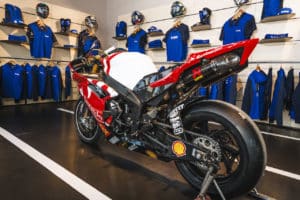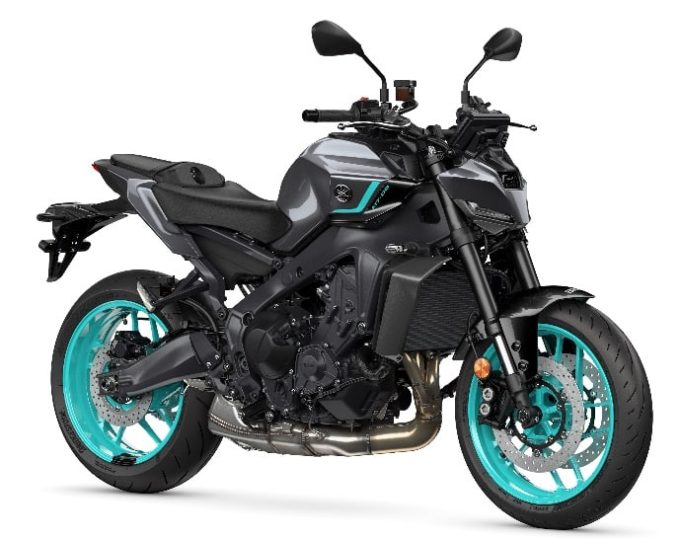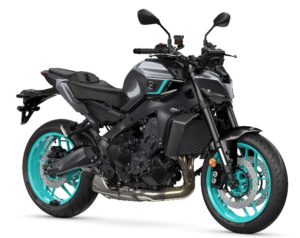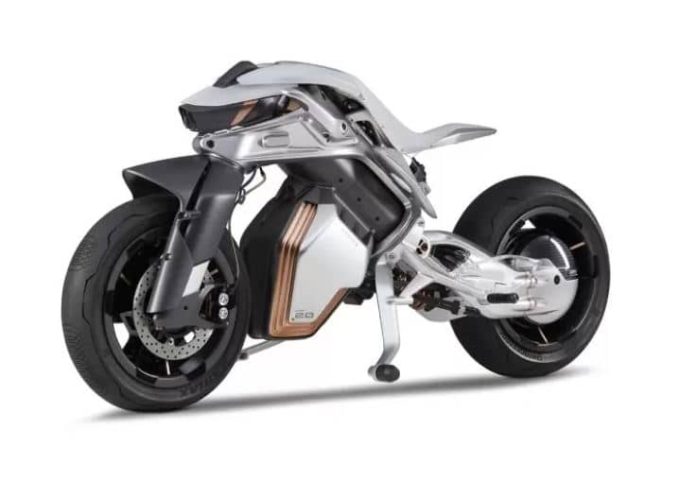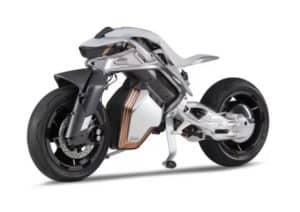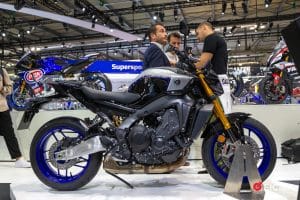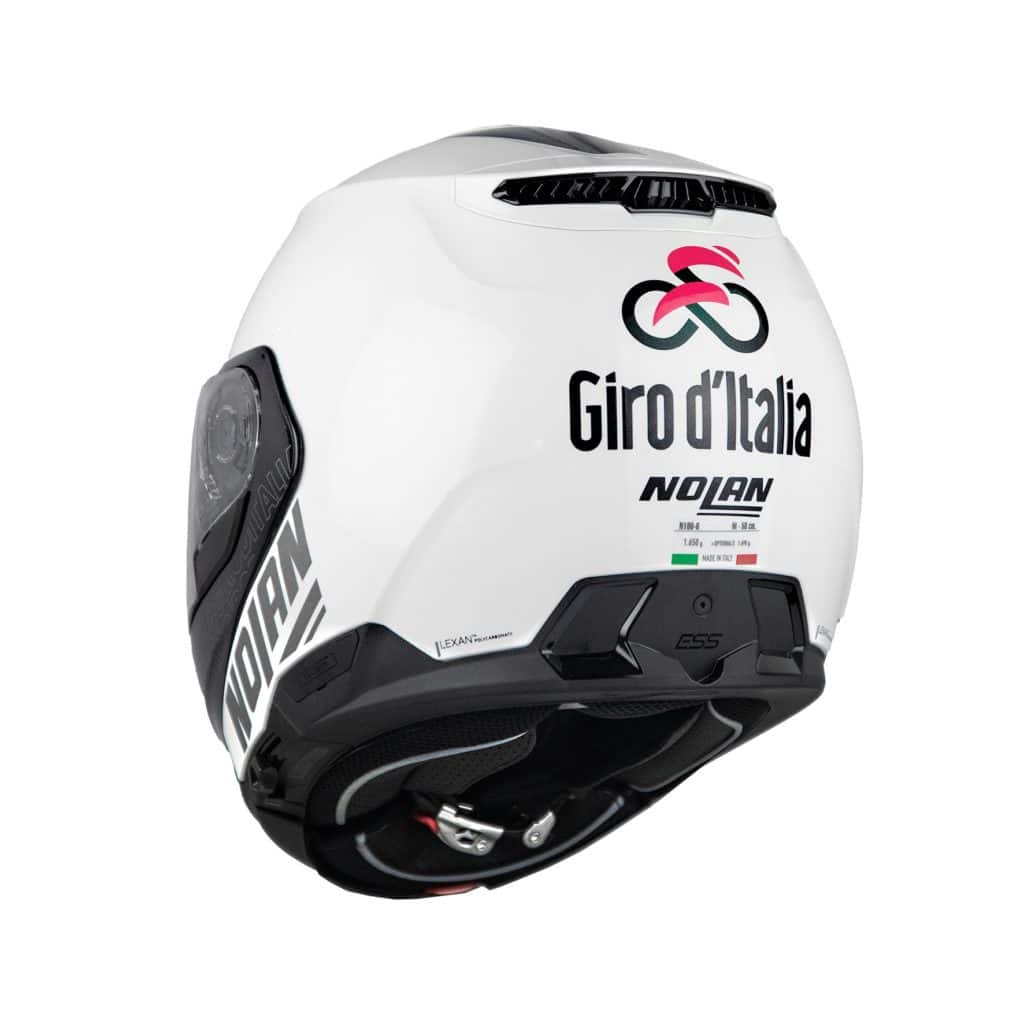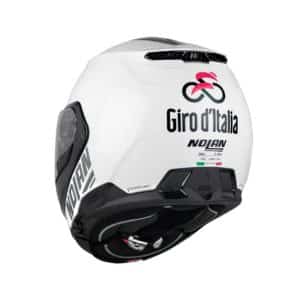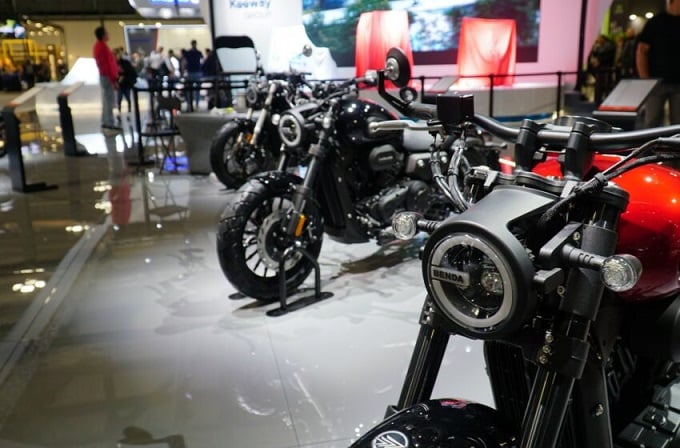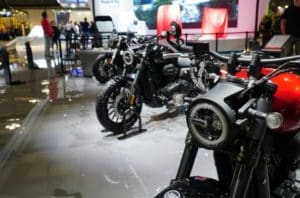Yamaha MT-10: a new powerful naked
A 4cc CP5 EU998 heart
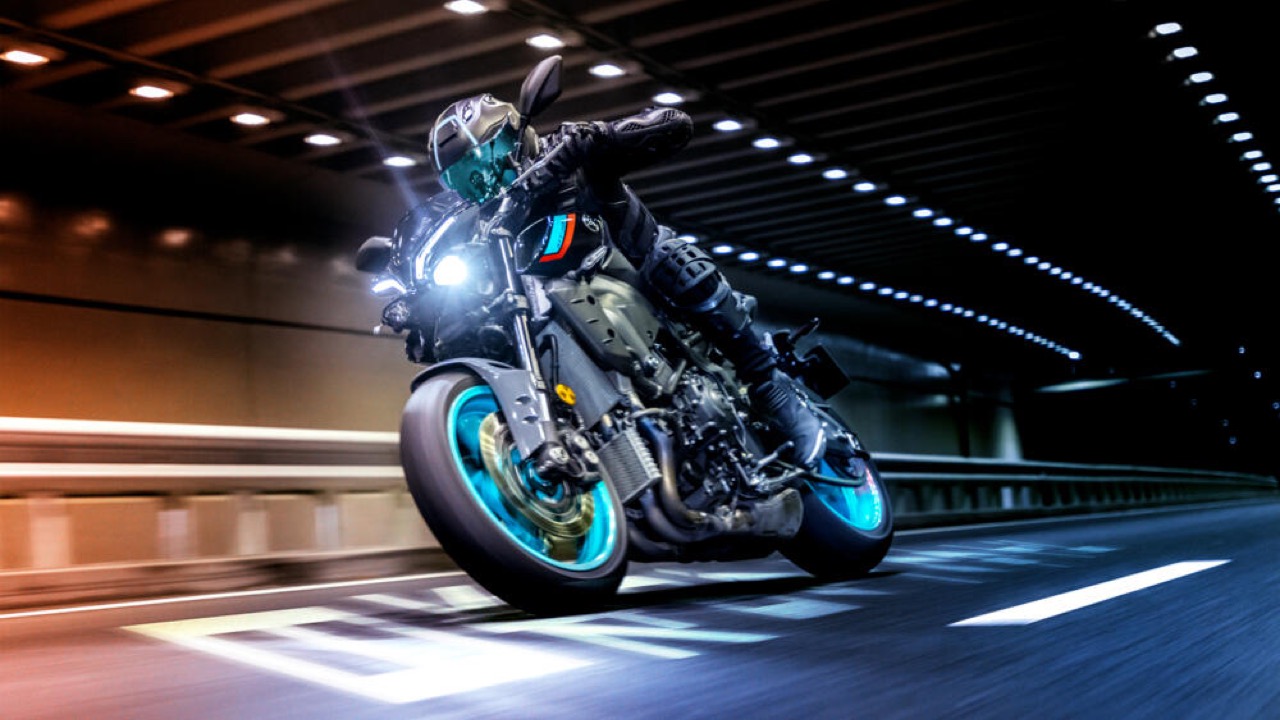

The evolved Yamaha MT-10 it is characterized by a minimalist and sporty style, technological contents and an optimized and high-performance CP4 engine.
Design
A bold, distinctive and dry style that highlights the mechanical part. It features light clusters LED with a distinctive twin-eye mono-focus front configuration with separate high and low beams and LED position lights located at the top. There is also a new LED rear light.
Overall the style is minimalist, it also includes functional dynamic air intakes for suction efficiency. Also connotative are the solutions for acoustic amplification located in front of the tank 17 liters, the air ducts transmit the intake sound of the CP4 engine, as indicated.
Also highlighted is the refined relationship between handlebar, footrest and saddle, together with the more ergonomic tank design, which allows for greater mobility when shifting weight when cornering. Modified the saddle placed at a height of 835 millimeters and there are also original accessories to personalize the model and Yamaha MT clothing.
A new titanium exhaust was then introduced, designed to transmit a more distinctive sound, highlighting the irregular burst ignition sequence.
Three matching colors: Cyanstorm a new Hi-Tech and trendy look; icon blue which recalls the competitions with blue circles and TechBlack in black with black rims.
Technology
Il Deltabox frame in aluminum it is designed to support 200 horsepower, using the CP4 engine as a stressed element, in order to keep the weight down. Also figure an aluminum swingarm and the wheelbase extends for 1.405 mm.
The suspension that promotes an agile and consistent ride is a 43 mm adjustable KYB fork with 120 mm of travel and an always adjustable KYB rear shock.
The braking system includes dual 320mm floating disc brakes with 4-piston radial calipers. A solution similar to that of the R1, with a new Brembo radial master cylinder.
The picture is completed by five-spoke aluminum wheels with a diameter of up to 17 inches and wearing Bridgestone Battlax Hypersport S22 tires measuring 120/70-ZR17 and 190/55-ZR17.
Technology
The motorcycle is equipped with a new 4,2 inch color TFT screen derived from the R1. A control on the right handlebar allows you to select information, then the "Mode/Select" control on the left side can allow you to modify the intervention levels of the electronic assistance systems and, if necessary, also dampen them.
In this regard, the vehicle features an accelerator ride-by-wire APSG (Accelerator Position Sensor Grip) that interacts with the solution Yamaha Chip Controlled Throttle (YCC-T) with four modes power delivery (PWR): PWR-1 is suitable for driving on the track; PWR-2 and PWR-3 offer greater fluidity; therefore PWR-4 appears softer and more suitable, for example, when driving on wet surfaces.
One is also highlighted IMU (Inertial Measurement Unit) with latest generation six axes, advanced, more compact and lighter. It has two sensors that detect the parameters and are transmitted to the ECU, which alerts the electronic driver assistance systems. Several solutions are cited as a Brake Control (BC) designed for greater controllability when driving halfway through bends, independently managing the pressure placed on the front and rear brakes. It is possible to select between two modes, the BC1 with standard active ABS and the BC2 which acts in emergency braking situations in the center of bends.
Also mentioned a lean-sensitive traction control system, one of the most advanced solutions with sensors that detect the relative speeds of the wheels and, in the event of a loss of traction of the rear wheel, the ECU temporarily interrupts the transmission to ensure traction and stability. Using data from the 6-axis IMU, this system is able to adjust the degree of intervention in relation to the lean angle of the motorcycle. Five levels of intervention are indicated.
THEEngine Brake (EBM), then, manages the degree of braking force of the engine and it is possible to choose between two levels: 1 with a high degree of engine braking or 2 for a more limited braking, allowing the motorcyclist to choose the level best suited to the conditions . These are preset modes, but can be adjusted or turned off.
Il LIFT control system (LIF), on the other hand, provides that if the sensors detect a possible wheelie, the ECU reduces power to the rear wheel until stability is regained. The levels are also preset in this case, but the pilot can adjust or deactivate them.
One more reported Slide Control system (SCS) in order to have greater control when cornering with the intervention of the ECU and a reduction of the transmission to the rear wheel until stability is regained. As in the previous case, the intervention levels are always preset and the pilot can adjust them or deactivate the solution.
Then a Yamaha Ride Control (YRC) which represents the possibility of creating an "all-inclusive" system, modifying the settings of all the traction control, SCS, QSS, LIF, EBM and BC systems at the same time.
This is available in four modes with preset values, varying between A, B, C and D, designed for various driving conditions. The motorcyclist can still choose to reset the different options.
Among the interesting aspects of the new Yamaha MT-10 there is also a Yamaha variable speed limiter (YVSL), being able to set a maximum speed limit. The QSS quickshifter is now present as original equipment, according to the information.
Motor
The new Yamaha MT-10 is equipped with an advanced and powerful engine 4 cc CP998, a refinement of the liquid-cooled, regulatory-compliant CP4 crossplane unit EU5.
Forged aluminum pistons, a new surface treatment of the cylinders based on efficiency and new features that enhance torque are highlighted.
Proposed a power that reaches i 165,9 horses (122,0 kW) at 11.500 rpm and a peak torque of 112 Nm at 9.000 rpm, with interventions on the injection settings to intensify the linear torque more between 4.000 and 8.000 rpm. The design of the intake and exhaust ducts has also been modified, as reported.
Availability
Deliveries to Yamaha dealers will begin since February 2022.
Photo: Yamaha Motor
if you want to always be updated on our news
Follow us here



